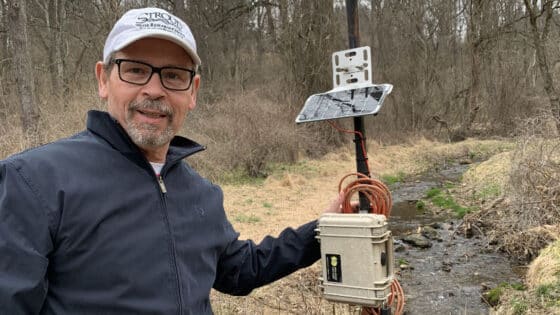Dow, C.L., and D.R. DeWalle. 1997. Hydrological Processes 11:801–816.
doi: 10.1002/(SICI)1099-1085(199706)11:7<801::AID-HYP518>3.0.CO;2-7
Abstract
Sulfur and nitrogen input–output budgets were estimated for five forested Appalachian Plateau basins in Pennsylvania for the period October 1988 to March 1990. Wet and dry deposition inputs were determined on a weekly basis from data collected at atmospheric deposition monitoring stations located near the study sites. Stream export was estimated from intensively sampled stream chemistry and continuous discharge data collected on all five basins. On four of the five basins, deposited sulfur was essentially in balance with stream flow export of sulfur (92–120% exported) for the 1989 water year. The fifth basin had net retention of deposited sulfur, with only 42% exported. All five basins retained the vast majority of deposited nitrogen (only 3–18% exported). The fraction of atmospherically deposited sulfur exported in stream flow was greater by a mean factor of 14 versus nitrogen, implying that sulfur dominates base cation leaching processes on these non-carbonate-based catchments. Although basins in the study were relatively homogeneous in terms of topography, climate, geology and land use, local basin conditions caused significant differences in input–output budgets, pointing to the need for replicated basin studies in a region.


